Garudasana (Eagle Pose)
What is Garudasana (Eagle Pose)?
The Garudasana (Eagle Pose) name translates from the Sanskrit words Garuda means Eagle and Asana means Posture or Position. Garuda is called the king of the birds. This standing position is also mentioned below the category of balancing positions and works to strengthen the legs.
Eagle Position has reviewed a base position as eagle position variations can be derived from this position. Eagle Position helps boost energy in the body and so can be included in the flow yoga series.
Garuda is called the king of birds and is the vahana (ascend) of Lord Vishnu (or Lord Krishna).
It is said that Lord Vishnu was very affected by the power and strength Garuda showed, and offered him a blessing. Garuda in return asked Lord Vishnu how he can be of need to him. It was then that Lord Vishnu required Garuda to be his vahana (mount/vehicle) for which Garuda gave his acceptance. Even though Garuda was the king of birds and a forceful bird associated with the sun and fire, he was a humble follower to his guru, Lord Vishnu. Garuda is said to be half human and half bird. His body sparkles like gold, with two of his hands doubled in Anjali Mudra, while the other two carry an umbrella and a container of amrita. His beaks, wings, and the modification of his body like his chest, and legs are that of a kite.
Garuda is represented in many structures; Khagesvara (king of birds), Suparna (one who has beautiful features), Suvarnakaya (with the golden body), Nagantaka (devourer – enemy of all snakes).
Two scriptures Garudopanishad (Garuda Upanishad), and Garuda Purana are committed to Garuda. The mantras and charms as directed in Garudopanishad when repeated, is said to cure poison. Since the text in Garudopanishad mentions reversing the effect of poison, regular exercise of Garudasana can cut the negative energy in the body directing to self-purification.
Garuda Purana (one of the 18 Mahapuran) on the other hand, incorporates in its texts, the theory of Yoga where it connects ways to exercise Yoga for personal enlargement and to increase self-knowledge.
Significance of Garudasana in Yoga: Garudasana also called the Eagle position translates from the two Sanskrit words Garuda means Eagle and Asana means Posture. Further, Garuda is also mentioned as ‘one who can raise extremely heavy loads’.
Start the king of birds, his ‘eagle eyes’ illustrate a clear vision, devoid of unconsciousness and misconception, looking straight into the truth of each situation. To exercise Garudasana, one has to develop their body using Drishti (one-pointed focus) and unaltered attention on the breath. It is also a useful tool for conducting your persons out of ignorance, mind-chatter, and ego, thus conducting their minds to the present moment. Garuda represents perseverance, sustenance, and protection, and Garudasana when exercised with awareness, conducts stability and perseverance along with core strength. While teaching Garudasana to persons, yoga teachers can impress humility and a sense of respect in their persons.
Garuda is also contrasted to the sun and fire, and hence, during the exercise of Garudasana, the strength of the physical body and mind essentials should be employed not just for the asana exercise, but also for the betterment of mankind. Having this consciousness will interchange the state of mind and fill it with regard, while exercising the position.
Moreover, as Garudasana is related to birds, it’s a great possibility for yoga teachers to include the concept in kid’s yoga, conducting more meaning to the exercise.
What are the Health Benefits of Garudasana (Eagle Pose)?
Eagle Position upgrades balance and focus, and postural and body awareness. It extends around your shoulders, upper back, and thighs, as it strengthens your core, thighs, legs, and ankles.
Muscles: The hamstring muscles, the quadriceps, calves, and shoulders are extended. This stretch conducts flexibility and strengthens the calves and the ankles.
Balance: This position upgrades the balance of the body and increases concentration. It works from the core and therefore the core strength is kept in mind here.
Stretches: This yoga position stretches the hips, thighs, shoulders, and upper back.
Joints: This position opens all the joints in the body; the shoulders, the elbows, the wrists, the hips, the knees, and the ankles.
Toxins: Since this asana is a bend, the position withdraws your body. It forces out your kidneys and circulates blood to your reproductive system.
Runners: This yoga position is observed wonderful and useful for runners. The joints filled with fresh blood act as better support for running and the stretching of the legs conducts more strength and stamina in the legs.
Mental & physical coordination: The yoga position helps to conduct coordination between body and mind thus good to conduct synergy in the body thereby helpful in combating stress and depression.
Strengthens the legs: It is an effective yoga position for the leg muscles, tones the nerves, and releases the joints. Thus, the exercise of it is beneficial in strengthening the legs and also helpful in controlling the leg’s abnormality. It energy the feet and thighs too.
Hydrocele: There are very few yoga positions, which work for the students of hydrocele. Garudasana is relaxing an important role to treat hydrocele problems if it is appositely exercised for a special period.
Alleviates sciatica nerve Pain: The regular exercise of the yoga position helps serve sciatica. It is also beneficial in a patient with rheumatism.
Testicle development: The exercise of the yoga position is extremely helpful in case of enlargement of the testicles.
Urinary problems: It has been found functional for people with anorectal and urinary maladies.
Concentration: The yoga position helps to develop concentration.
Balance: It is also called to develop balance in the body.
Good for shoulders: The yoga position is good for the shoulders, upper back, and arms. Those who have seated continuously ahead of the computer, have to exercise this yoga position to reduce the stiffness in the arms and shoulders.
Neuro-muscular health: It is good to therefore neuromuscular coordination.
Benefits for Women: Helps to balance the lower abdominal and pelvic muscles which is cooperative during pregnancy. Conducts lightness to the body during pregnancy or when there are feelings of onerousness.
Others: Helps reduce sciatica and rheumatism. Strengthens the calves. Loosens the legs and hips, making them more tensile.
What are the Preparatory poses for Garudasana (Eagle Pose)?
The exercise of Garudasana (Eagle Position) requires the use of both the arms and the legs while they are in a bend. To upgrade the flexibility of both the shoulders and hips to make internal rotation simple for Eagle Position, some of these given positions focus on external rotation, to improve the range of motion can be exercised:
- Tadasana Paschima Namaskarasana (Standing Reverse Prayer Position)
- Baddha Konasana (Bound Angle Position)
- Gomukhasana (Cow Face Position)
- Utkatasana Variation Eagle Arms (Chair Position Variation Eagle Arms)
- Eka Pada Tadasana (One Legged Mountain Position)
- Sukhasana Deltoids Stretch (Sitting Deltoids Stretch)
- Vakrasana (Twisted Position)
- Supta Parivrtta Garudasana (Reclining Eagle Spinal Twist Position)
- Virasana (Hero Position)
- Vrksasana (Tree Position)
- Adho Mukha Svanasana (Downward-Facing Dog Position)
- Prasarita Padottanasana (Wide- Legged Standing Forward Bend)
- Utkatasana (Chair Position)
- Supta Virasana (Reclining Hero Position)
- Supta Baddha Konasana (Reclining Bound Angle Position)
- Upavistha Konasana (Wide-Angle Seated Forward Bend)
How to Perform Garudasana (Eagle Pose)?
Stand in Tadasana (Mountain Position), modifying and taking a few breaths here.
Inspire and lift the right foot from the ground and place the right leg over the left thigh above the left knee. Modify the back of the right thigh on the anterior of the left thigh. Expire here and watch the balance.
Currently, move the right foot beyond the left calf so that the right shin touches the left calf and the right big toe hooks just above the inner side of the left ankle. The right leg is now locked all over the left leg.
When enjoyable, lower the hips and endure in balance for some time.
Twist the elbows and lift the arms to the level of the chest. Rest the left elbow on the anterior of the right upper arm near the elbow joint. Then move the left hand back to the right and the right hand back to the left and join the palms. The left arm is locked about the right arm.
Stay concentrated gazing at one point and make certain the back is straight. Endure in this position for about a few seconds, or about 6 breaths absorbing from the core, as you pull your navel in.
Be aware of the stability, the stretch, the weight of the body on the foot, the breath, and the gaze, which all place together to help you stay in stability.
To release, modify the arms and the legs and come back to Tadasana (Mountain Position) and moderate.
Repeat the position standing on the right leg and interlocking the left foot beyond the right calf and the right arm above the left arm. Stay here with the balance for about 6 breaths and make certain the spine is straight, as you drop the hips lower.
For better balance it is important to conduct the focus from the core and the more the legs are interlocked tight the good the balance.
How to Perform Garudasana (Eagle Pose) by Watching a Video?
What are Follow up poses for Garudasana (Eagle Pose)?
Post the exercise of Eagle Position (Garudasana) which is an internal rotation of the hips and shoulders the following positions should be practiced as part of relaxing and cooling down:
- Uttanasana (Standing Forward Bend Position)
- Urdhva Hastotanasana (Palm Tree Position)
- Malasana (Garland Position)
- Prasarita Padottanasana Adho Mukha Svanasana Hasta (Wide Legged Forward Fold Position Downward Facing Dog Position Arms)
- Balasana (Child’s Position)
- Adho Mukha Svanasana (Downward-Facing Dog Position)
- Utkata Konasana (Goddess Position)
- Setu Bandha Konasana (Bridge Position)
- Start with the downward facing dog, reclining bound angle, chair position, or tree position, and then progress to eagle position. Follow-up with chair position or tree position.
What are the Beginners tips in Garudasana (Eagle Pose)?
You may find it difficult to hook your lifted-leg foot beyond your standing-leg calf and then balance on your standing foot. As a short-term option, cross your legs, but moderately of hooking your lifted foot and calf, press the big toe of your lifted-leg foot against the ground to help maintain your balance.
What is the Breath Awareness in Garudasana (Eagle Pose)?
In the exercise of Garudasana, it’s the breathing that is soft and deep that supports the hips to endure stability and balance. Given under are these breathing instructions for a better understanding of this position exercise:
Inspire – conduct the right thigh over the left, and lock the foot.
Expire – lower the hips down.
Inhale – lock the right elbow above and under the left elbow.
Expire – lower the arms down to chest level.
Inspire – tighten the grasp at the elbows and thighs.
Expire – lower the hips and pull the belly in.
Inspire/Expire – soft inspiration to interlock the elbows and thighs, and soft expirations to lower the hips down and stay in balance.
Inhaling/Exhaling – softly to endure in balance as you gaze in anterior at one point.
Expire – release the arms and the thighs to come back to Tadasana.
It is instructed not to hold your breath, but to be aware of your breath (abdominal breathing) which is smooth and deep.
What are Alignment tips for Garudasana (Eagle Pose)?
An agreeably detoxifying posture, Garudasana, or Eagle Position, can be a bit discouraging at first.
With a few modifications and some tricks to stay balanced, anyway, even the newest yogi can feel restful giving it a go.
Balance starts in Tadasana: Start this posture ahead you even move into it. Find your drishti (focal point) in Tadasana, or Mountain Position, taking 5 to 7 deep breaths and turn your gaze inward. Accomplish an open-eye meditation. When you are ready, conduct your awareness to your left leg. Scan it. Feel it floor you down and feel the recovering support from the earth below. Shift your weight into your floored, supported, and strong left leg.
Start with your wings: Expand your arms out like wings and reach up to the sky above you. Powerfully sweep your right arm below your left. Cross at the elbows and if obtainable, connect the palms. If you are new to this posture, depress the back of your hands together.
Cross your thigh high: Twist your knees and sit down in the Chair. Raise your right leg and cross it as high as possible over your left thigh. The higher you cross the legs, and the more balance you will realize.
Sit down deep but tall: Square the hips. Sit down deeper using the strength in the legs while the chest stays splendid and shoulders stack above the hips. We tend to lean ahead and hunch over the knees and toes. Imagine yourself gliding down a wall with your shoulders and upper back flatly opposed to it.
Balance radiates from your core: Arrest Mula and Uddiyana Bandha and conduct balance back. The key to balance is finding the proper adjustment for your body. Garudasana is a demanding posture and essentials a lot of strength, flexibility, and concentration. If you fall out of it, just turn the corners of your mouth up, separate self-intelligence, and try again.
What are the Variations of Garudasana (Eagle Pose)?
Under are some common variations of the yoga position Eagle Position with the base position as Eagle Position (Garudasana).
Eagle Position variations with the base position as Eagle Position (Garudasana).
As peoples have varying capabilities, a given yoga position may be simple for a particular person but hard for another. In such cases, as a yoga trainer you can initiate position variations to further opposition a person who is locating a specific yoga position simple, or introduce an easier variation of a position for the person who is finding the main position hard.
Position variations can therefore help your peoples grow and build further confidence in their yoga exercises no matter what their starting capability levels are. And this is where your character as a yoga trainer becomes very important. Under we have compiled so many position variations of Eagle Position at one place to give you suggestions to plan your yoga classes as you interconnect with persons of different levels.
This yoga position can be used along with various other yoga positions like Gomukhasana, Sirsasana, Reclining Eagle Position, Handstand (with legs interlocked in Garudasana).
- Eagle Position
- Eagle Arms Close Up
- Eagle Position Variation 1
- Eagle Position Chair
- Seated With Eagle Arms On Chair
- Half Eagle Position
- Supine Eagle Legs Position Flow
- Eagle Position Foot On Block
- Seated With Eagle Legs Position Chair Variation
- Eagle Position Squat
- Seated With Eagle Legs Position Chair Variation Flow
What are the Modifications in Garudasana (Eagle Pose)?
In this position as the balancing of the body can be demanding, one could use the wall for support. Moderating the crossed leg foot on the ground for A starter is a good way to get to the position moderately. If the interlocking of the arms and the elbows is heavy, then one can just go into a simple Namaste close to the chest or interlock as per the agreeable.
Certain tips are required to get Garudasana perfect. They are:
This yoga position creates elegance, poise, and strength when it is exercised with correct adjustment.
Compress your thighs and arms together tightly. The more this is done the more the balance you will obtain.
Work to keep the arms, hands, and thighs in one direct line.
Rather than just hooking the raised foot to the standing calf, actively begin to slide the toes down the back of the calf.
Continuing your depth, raise the chest away from the thighs and stack shoulders over hips.
Twist your knees deeply and sink your tailbone as close to the ground as possible.
Conduct the gaze to any one point and avoid looking down or too up.
What are the Precautions and Contraindications for the Garudasana (Eagle Pose)?
Precautions:
Starters will find it heavy to maintain balance originally, focusing the gaze at a fixed point helps support the balance. Follow the steps slowly to attain the balance. You can also try the position by following the commands for arms first, followed by those of legs. If you select to do so observe the steps in this method after standing in Tadasana: 3, 4, 1, 2, 5, and 6. You may find this method more simple to conserve balance. Once you have learned to balance well, and exercise the steps mentioned above. After acquiring well in the position you may keep your eyes closed for better concentration.
Avoid exercising Garudasana in case you have had a recent knee, ankle, or shoulder injury.
Eagle position should not be ventured if you suffer from any of these conditions: Obesity, frequent headaches, high or low blood pressure, or asthma.
Pregnant women must avoid exercising Eagle Position as well.
The eagle position should not be achieved in the following conditions:
- Severe arthritis
- Varicose veins
- Injuries to bones and joints.
- 3rd-trimester pregnancy should not exercise it.
- It should be also circumvented in case of low blood pressure, headache, and inner ear problems.
- Adjustment, especially of hands, arms, and thighs is important in the case of Garudasana.
- While completing it, the back should be straight as the rounded back seems to be less beneficial.
- Avoid exercising it if you have knee, elbow, arms, and shoulder injuries.
Contraindication:
Avoid acquiring into this position if you have any,
- Elbow injury.
- Knee injury.
- Ankle injury.
- Wrist injury.
- Varicose veins in the back of the knees,
- severe knee pain, arthritis.
- Not for women in late-term pregnancy.
What are the dos and Don’ts in Garudasana (Eagle Pose)?
Do’s:
- Keep the upper body straight.
- Gaze at a fixed point in the anterior to keep balance.
Don’ts:
- Lose balance.
- Raise any part of the right sole off the floor.
What are the Common Mistakes in Garudasana (Eagle Pose)?
Adjustment is important. Be certain that your hands, arms, and thighs are aligned. Eagle Position is usually done with a straight back, so a rounded back is appraised to be less beneficial.
What are the Therapeutic applications of Garudasana (Eagle Pose)?
- Sciatica
- Rheumatism
- Unstable pelvis during pregnancy

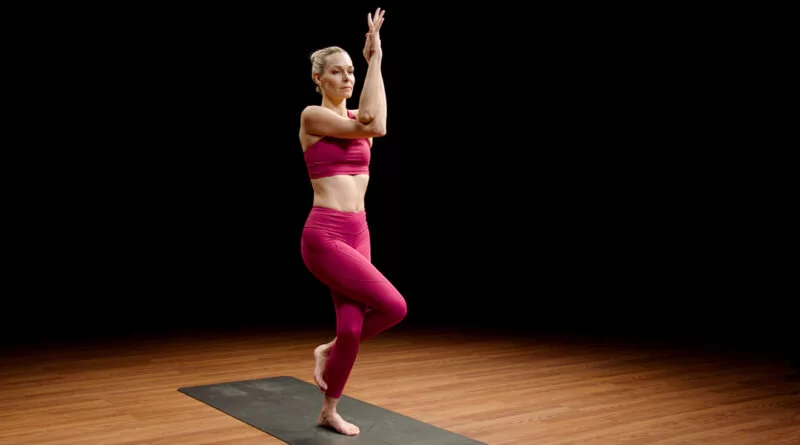

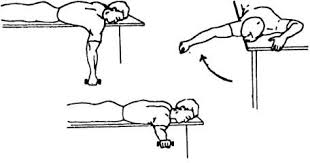

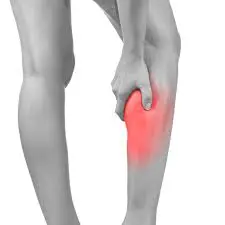
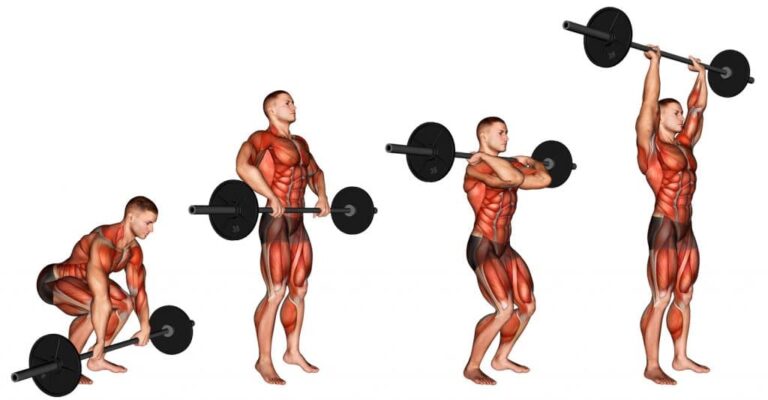
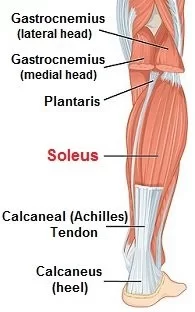
One Comment